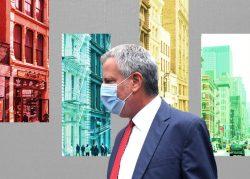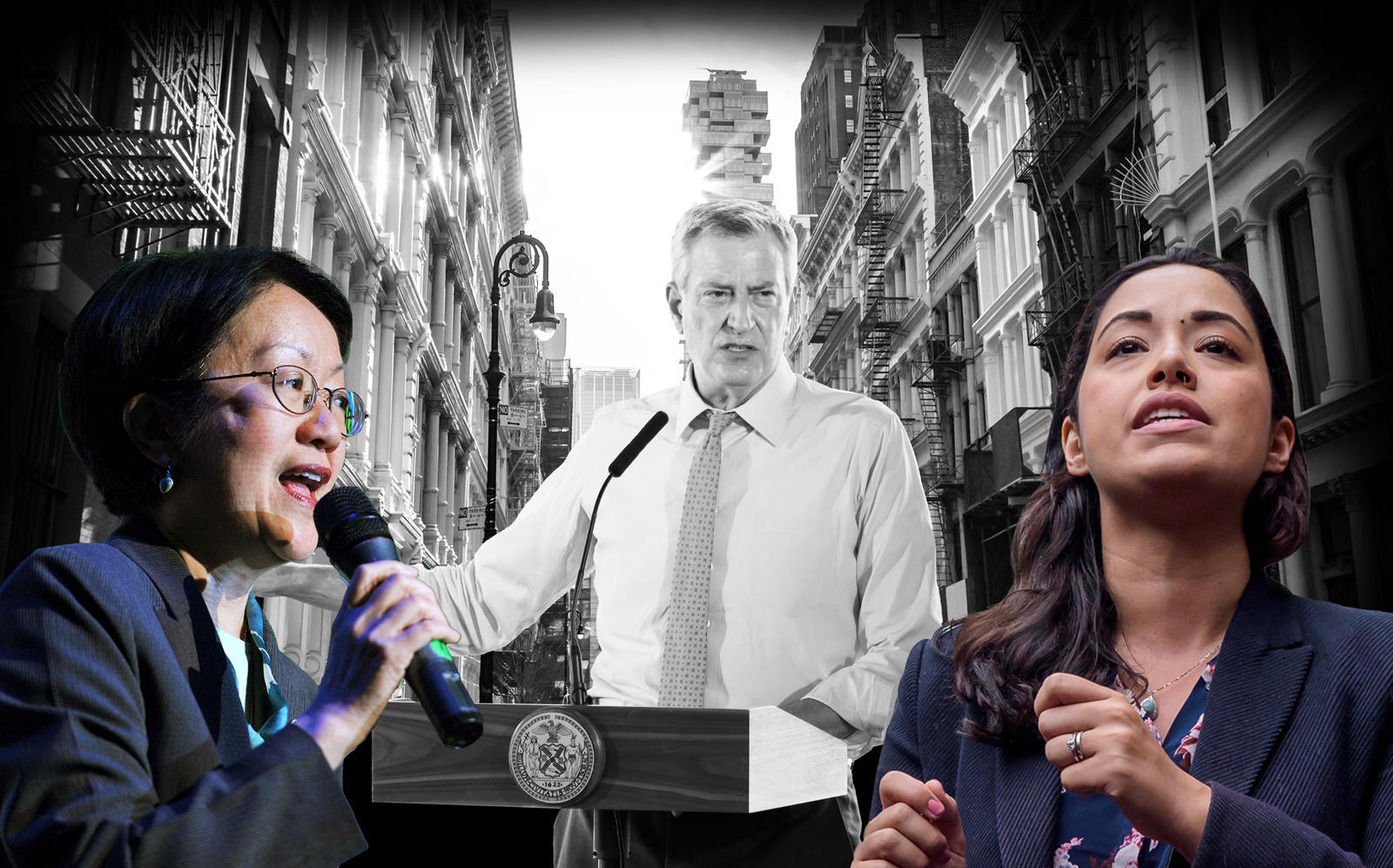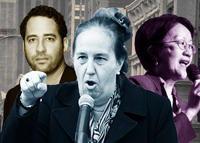 Soho to be rezoned: de Blasio
Soho to be rezoned: de Blasio
Trending
Why the Soho rezoning will pass — and Gowanus, too
Race is tailwind for real estate industry this time around

Developers prefer clear rules that they can follow to complete their projects. But in a dynamic metropolis such as New York, rules often become outdated as the city evolves. Shifts in lifestyles, technology, values and the economy create an ever-widening gap between what the rules allow and what developers, planners and elected officials want.
Updating the rules is a technical process but inherently political. It gets even more so when race is a factor. And in New York City, it almost always is.
Take the rezoning of Inwood. Even though city planners considered it badly needed and long overdue, locals’ fear that it would lead to white newcomers displacing minorities compelled Mayor Bill de Blasio to pony up $200 million in community benefits to win over Inwood’s City Council member, Ydanis Rodriguez. A similar scenario had played out two years earlier with Rafael Espinal in East New York, one of the poorest neighborhoods in Brooklyn.
This racial headwind has only become stronger since, to the point where hundreds of millions of dollars for park upgrades and other goodies is no longer enough to overcome it. Witness the death of rezonings in Bushwick and the South Bronx before they even got off the drawing board last year. One of the killers of the Bushwick rezoning was Espinal, the same City Council member who had agreed to the East New York deal.
The headwind is often a problem for the real estate industry, which in much of the city is hamstrung by zoning that is low-density residential, heavy manufacturing or otherwise incompatible with today’s marketplace.
But race can also be a tailwind for the industry.
Consider Soho, where local resistance to de Blasio’s proposed rezoning is destined to be overcome because the new rules would welcome minorities into an overwhelmingly white neighborhood.
Read more
 Soho to be rezoned: de Blasio
Soho to be rezoned: de Blasio
 The battle to rezone Soho is just beginning
The battle to rezone Soho is just beginning
 Soho landlords are joining forces to win the neighborhood's rezoning fight
Soho landlords are joining forces to win the neighborhood's rezoning fight
The two City Council members who control the fate of the Soho and Noho rezoning, Margaret Chin and Carlina Rivera, are hardly friends of real estate. Chin opposes four residential towers planned for Two Bridges and sponsored a bill to force more developments to get political approval. Rivera has been fighting developer Gregg Singer’s plan to convert the former P.S. 64 in the East Village — a building he owns — into a college dorm.
But Chin stood up to NIMBYs in permitting affordable housing for seniors in Nolita, and Rivera did the same in approving the Union Square tech hub. Neither is inclined to stand against desegregating Soho. Increasingly, integration is the narrative of the rezoning plan — not just because it is politically effective, but also because it is true.
Soho is simply too expensive for City Hall — which is broke in any event — to subsidize much affordable housing. The only alternative is to rezone, which under de Blasio’s mandatory inclusionary housing law would require developers of new residential construction to set aside affordable units.
A YIMBY (yes in my backyard) group, Open New York, is pushing this narrative not only in Soho but in Gowanus, which the mayor also plans to rezone next year. The Brooklyn neighborhood shares Soho’s historical pattern of morphing from a manufacturing area into a residential enclave, first attracting artists and later yuppies, without the zoning being updated to reflect that evolution.
The limited development allowed in both areas contributes to the high cost of housing citywide, which is especially burdensome to people of color. The argument that Soho and Gowanus are not doing their fair share to house working-class New Yorkers or alleviate gentrification is especially powerful in the City Council, where members are eager to make up for past practices that either intentionally or accidentally hurt minorities.
Few were as blatantly racist as Robert Moses’ construction of low bridges over parkways to keep public buses from reaching certain beaches and parks. Many efforts, in fact, were intended to help minorities, but later came to be seen as doing the opposite.
The isolated and inward-facing design of public housing developments was supposed to shield residents from the distractions and dangers of the city, but today is seen as fostering crime and cutting tenants off from the streetscape and job opportunities.
The 421a tax abatement was intended to curb white flight by using property tax breaks to incentivize housing construction. The state made the tax break available in the core of Manhattan only if developers also built affordable housing. But the low-rent units could be built off-site, so developers put them where land was cheaper, such as the South Bronx.
This was seen as good for minorities because more low-rent units could be built for the same amount of money. But concentrating low-income households didn’t work any better for 421a than it did for public housing, so the program was revised to require the market-rate and affordable units to be on the same site.
That led to the “poor door” — developers separating the affordable and market-rate units in their developments. Outrage ensued, and politicians closed the loophole.
The government’s game of Whac-a-Mole is not over. Complaints persist about 421a, now called Affordable New York. City Comptroller Scott Stringer has made it a target of his mayoral campaign, saying it accelerates gentrification (a polite term for white people moving into minority areas) and is “giving away the store” to developers.
The next mayor can influence that debate but not decide it, as de Blasio discovered when he and real estate interests proposed a new 421a and state lawmakers instead crafted their own.
What the City Council and de Blasio can do unilaterally, however, is rezone. And race will help them do that in Soho.
Soho has good public schools, low crime and great access to subways and jobs, so opposing a plan that welcomes people of color would be politically treacherous. There will be gripes about building heights and other details, but at the end of the day, new zoning will be approved, as it will in Gowanus for the same reason.




